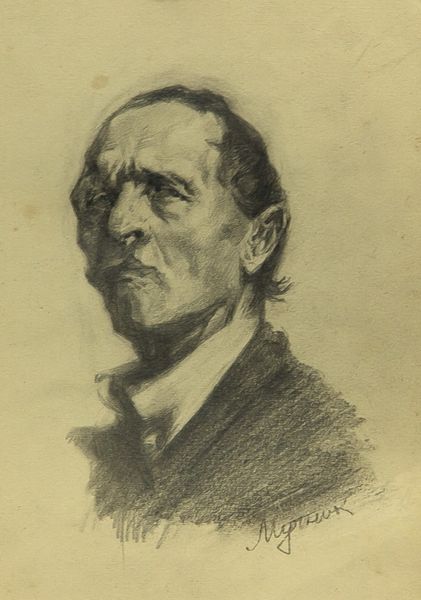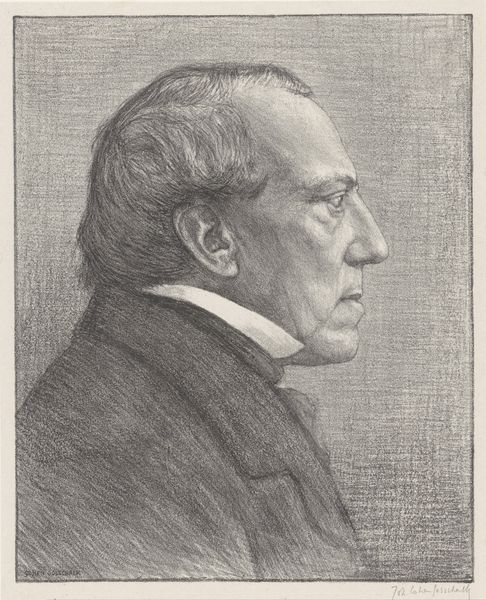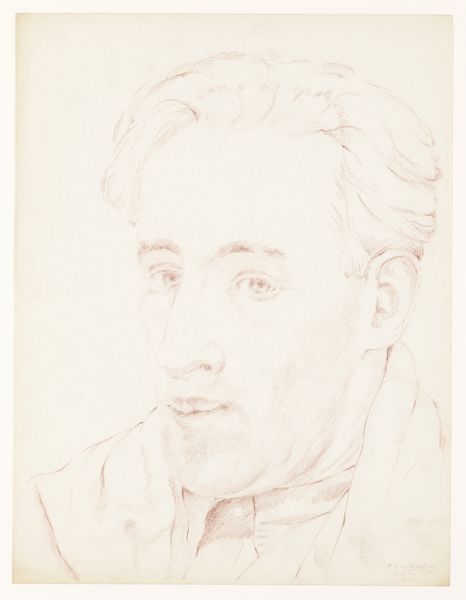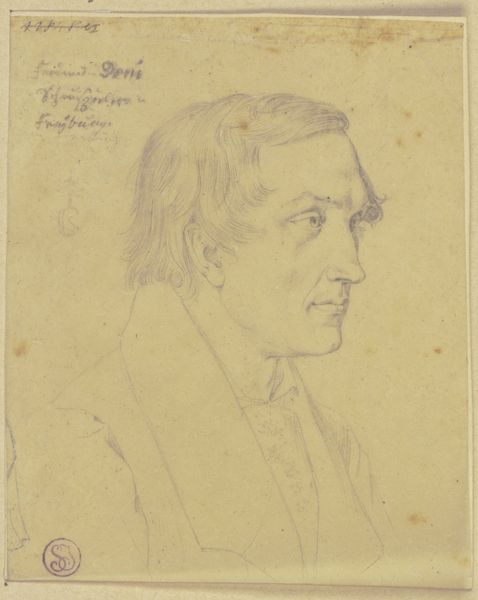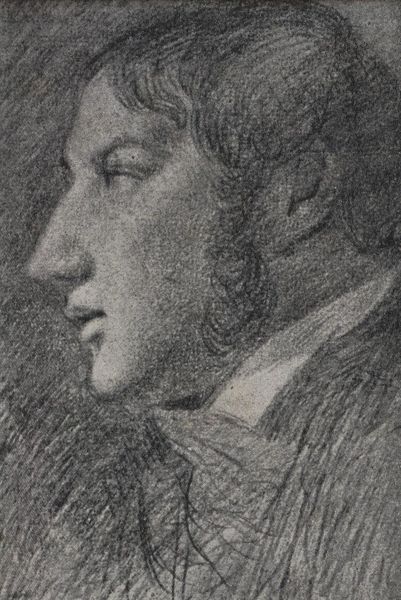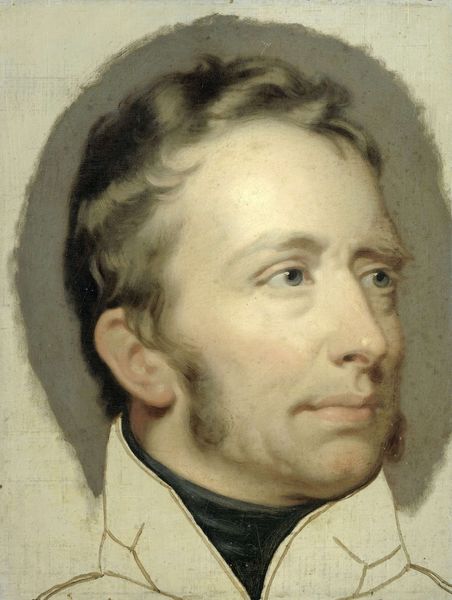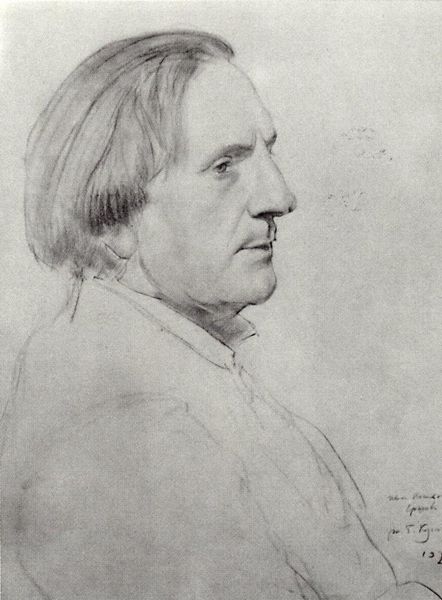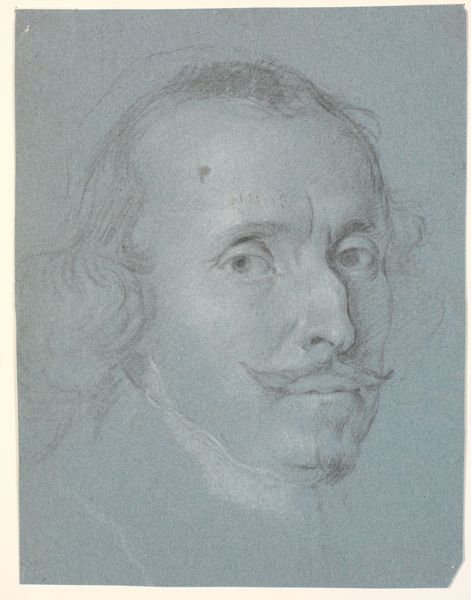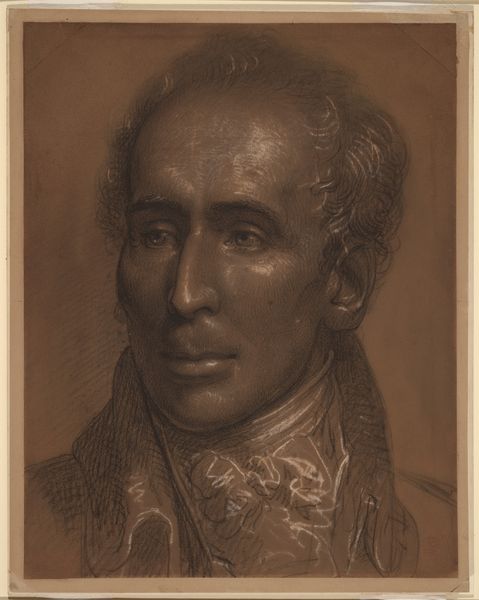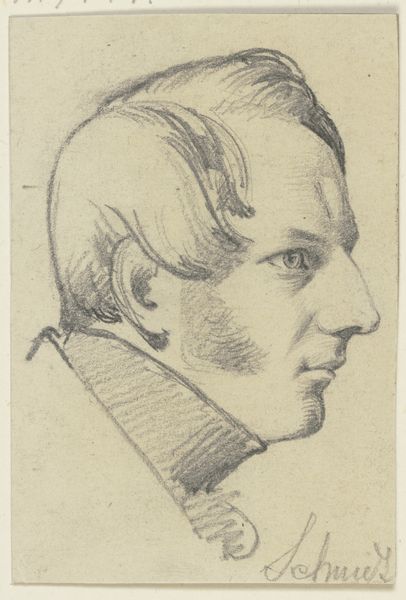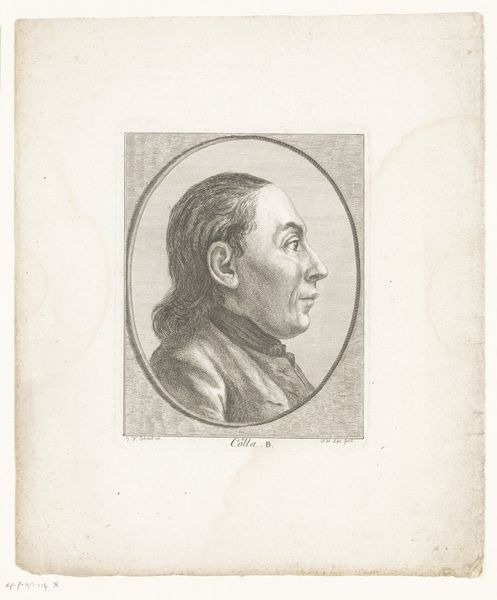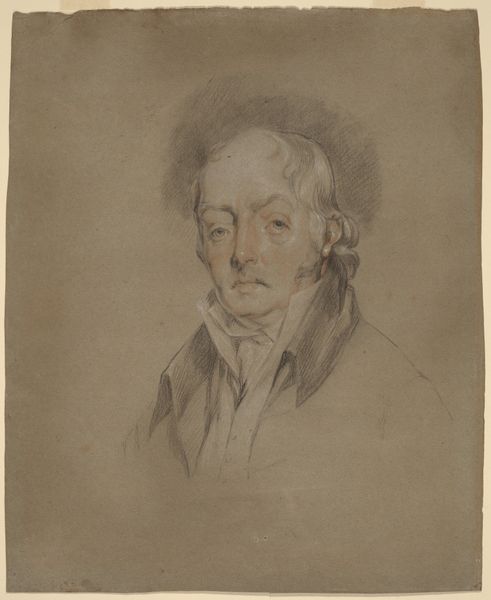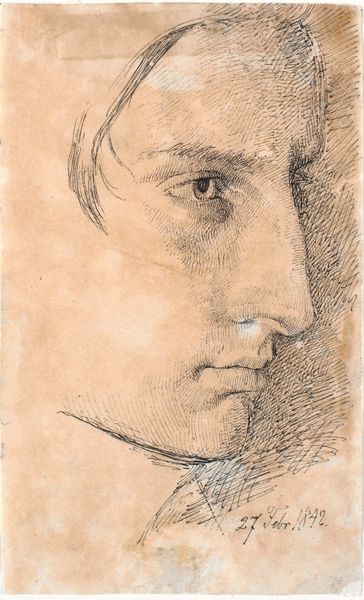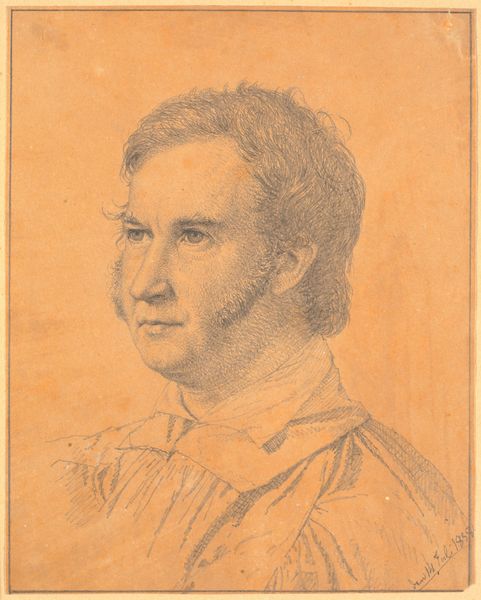
drawing, pencil, chalk, charcoal
#
portrait
#
drawing
#
neoclacissism
#
portrait image
#
portrait
#
portrait reference
#
portrait head and shoulder
#
pencil
#
chalk
#
portrait drawing
#
facial study
#
charcoal
#
facial portrait
#
portrait art
#
fine art portrait
#
digital portrait
Copyright: Public domain
Curator: Here we have Jean-Baptiste Greuze’s "Portrait of Diderot," created in 1766 using pencil, chalk, and charcoal. Editor: The somber tonality immediately strikes me. It’s almost monochromatic, with that earth-toned paper as a backdrop to his stark profile. There’s a kind of austere thoughtfulness that radiates from it. Curator: Greuze rendered this image of Diderot at a fascinating moment in art history. We're on the cusp of Neoclassicism, but still clinging to some Rococo sentimentality. Consider Diderot's own writings, his critical role in the Enlightenment – how is Greuze choosing to represent that? Is it an objective rendering, or are there social constructs informing his portrayal? Editor: The Enlightenment's emphasis on reason and observation is palpable. Diderot is captured in profile, a deliberate choice that positions him almost like a Roman emperor on a coin. He’s distanced, stoic… it evokes the power structures embedded in patronage and portraiture of the era, right? Who gets memorialized, and how? Curator: Absolutely. And consider the context – Diderot’s writings often challenged the very foundations of societal power. Was Greuze subtly hinting at this rebellious spirit? His inclusion in the Parisian Salon surely elevated his stature. To showcase his brilliance and philosophical impact, he's got this quiet air of authority in that chalk outline. Editor: Although, the fragility of the medium undermines any overt displays of power. Pencil and chalk are so vulnerable, so impermanent. Does that speak to the ephemeral nature of fame, or even of the Enlightenment’s ideals? He is well placed, though - not an everyman off the streets. I want to think of whose voice did this champion in France, you know? The context of production and consumption always seems intertwined. Curator: I appreciate your highlighting that duality. I’ve often wondered about Diderot’s own perspective. As a critic of the arts himself, what were his thoughts on how his likeness was being circulated and consumed within French society? Editor: Indeed! Well, considering its place in the timeline, this portrait becomes a compelling artifact of intellectual and artistic dialogue. Curator: It certainly offers so many interesting viewpoints through which to regard the man, the artwork, and their moment.
Comments
No comments
Be the first to comment and join the conversation on the ultimate creative platform.
